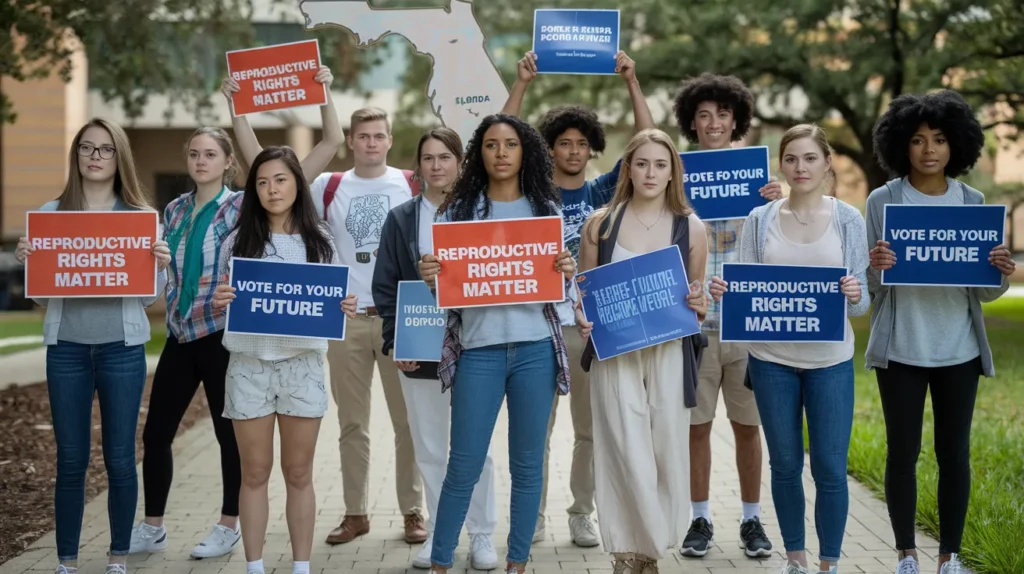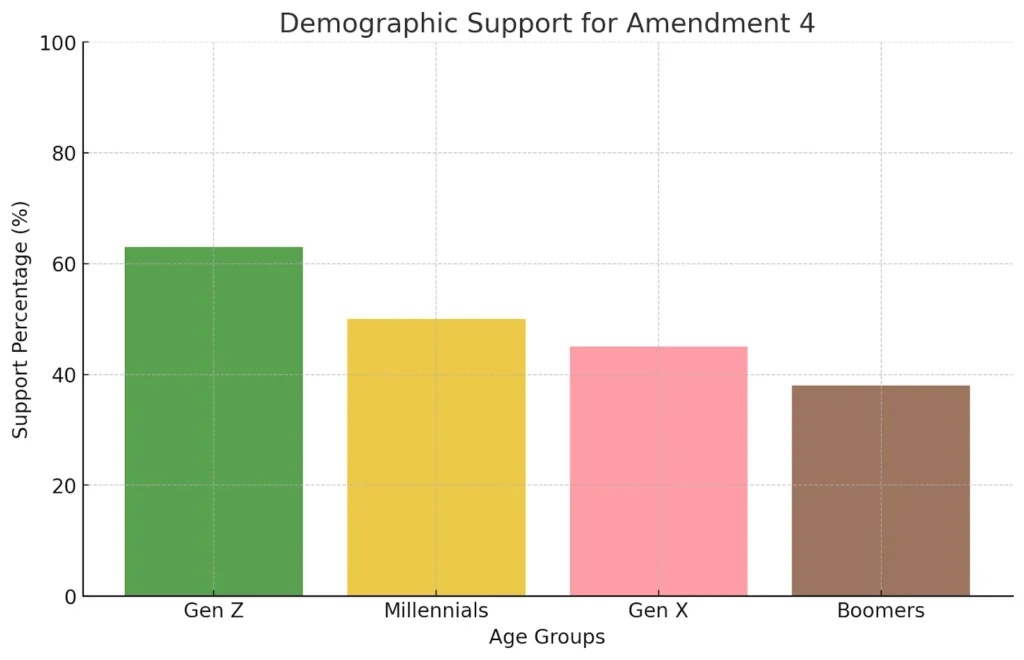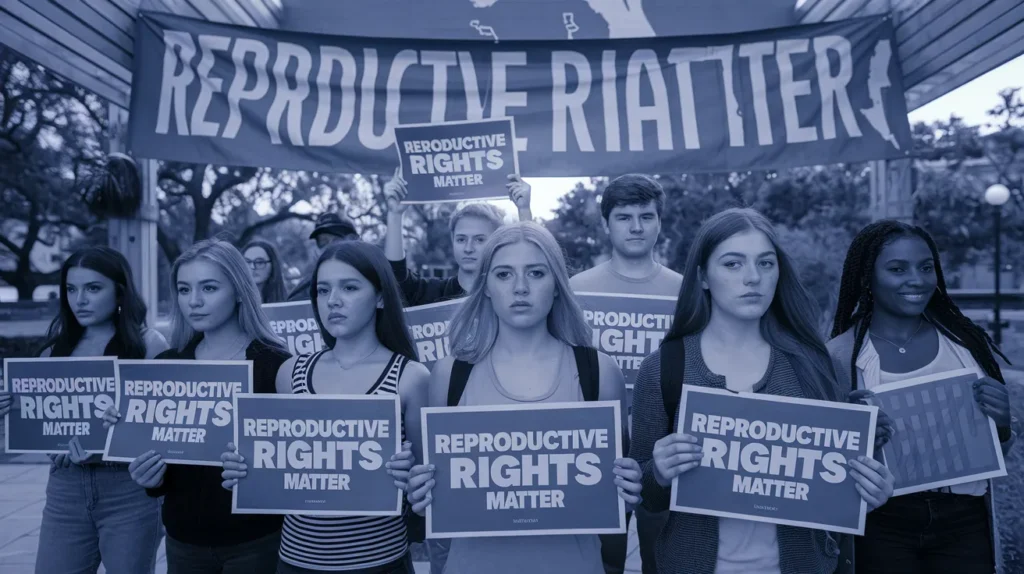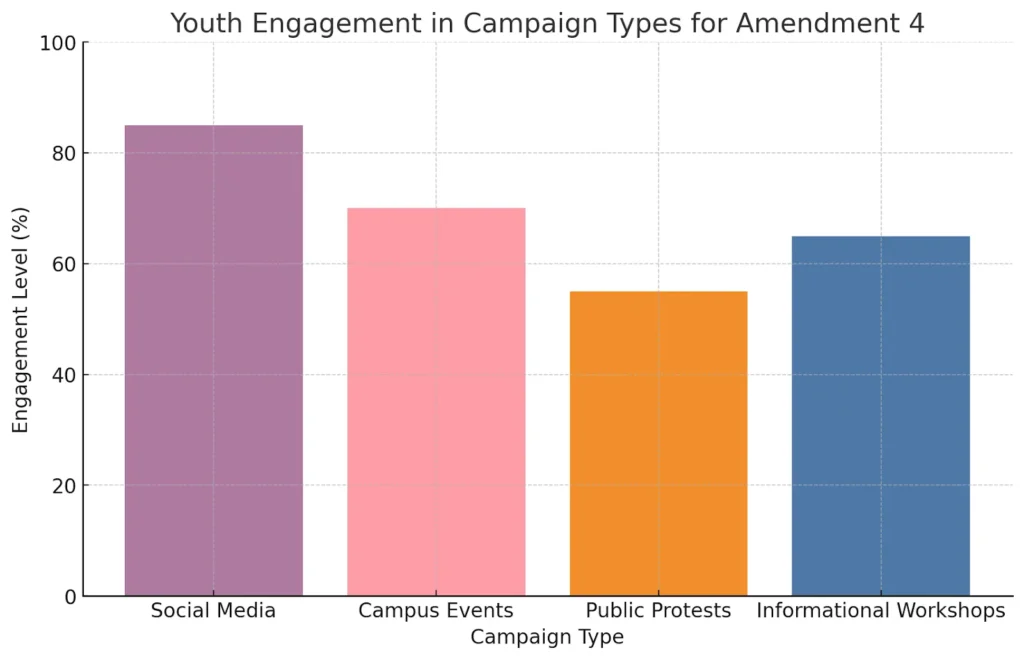In the recent elections, Florida’s Amendment 4 – which aimed to safeguard abortion rights within the state constitution – sparked a heated debate and drew widespread attention. Although it garnered nearly 57% of votes in favor, it ultimately fell short of the 60% threshold required to pass. A significant aspect of this vote was the role of young voters, especially Generation Z, who emerged as passionate advocates in the fight for reproductive rights. However, despite their strong opinions, youth turnout presented unique challenges. This article delves into the impact of young voters on Amendment 4, the mobilization efforts surrounding their involvement, and the potential lessons learned for future electoral campaigns.
- Florida’s Amendment 3: Tracking Shifts in Public Support Over Time
- GPT 5 Release Date, Apple-Meta AI, & Robot Dogs: The Future of AI
- 5 Reasons Why Mohammad Rizwan Is the Perfect Captain for Pakistan?
- How to Download Your Voter Slip Online for Lok Sabha Elections 2024
How Generation Z’s Involvement Shaped Amendment 4’s Outcome
Young voters, often characterized by their enthusiasm and activism on social issues, were seen as pivotal to the outcome of Amendment 4. Recognizing the influence of this demographic, numerous advocacy groups campaigned extensively across Florida to rally support from younger generations. College campuses were a particular focus, with organizations hosting informational sessions, distributing flyers, and gathering pledge-to-vote cards to increase awareness around the amendment’s impact on abortion rights.

This outreach highlighted the urgency of the cause for many students who felt directly impacted by the prospect of restrictive abortion laws. As they rallied for the amendment, young people aimed to voice their support for reproductive freedom and the right to bodily autonomy. However, while many were eager to participate, actual voter turnout among young people was less than anticipated, and the limitations in mobilizing their voices played a crucial role in the amendment’s failure to pass.

Florida’s Amendment 4: Challenges in Youth Voter Engagement
Youth engagement in political campaigns can be challenging due to various factors, such as limited access to voting facilities, unfamiliarity with voting processes, and competing priorities. Although many young individuals expressed their support for Amendment 4 on social media and through public protests, converting this activism into actual votes proved difficult. Limited access to transportation, unclear voter registration instructions, and busy academic schedules all contributed to lower youth turnout.
The specific challenges faced by young voters in Florida demonstrate the need for tailored strategies in future campaigns. To maximize their participation, election authorities and advocacy groups must prioritize accessible voting options and provide clear guidance on the voting process. In addition, engaging students in conversations that relate directly to their experiences and concerns can create a stronger motivation to participate in the electoral process.
Key Insights from Florida’s Amendment 4 Vote
| Aspect | Insight |
| Voter Support | Amendment received 57% support but needed 60% to pass |
| Youth Engagement | High enthusiasm but low turnout among young voters |
| Main Barriers | Access to voting locations, academic obligations |
| Advocacy Efforts | Campus campaigns and educational outreach |
| Lessons Learned | Importance of accessible voting options |
| Potential Improvements | Early education on voting processes |
| Impact on Future | Highlighted the need for youth-centered campaigns |
| Campaign Tactics | Focused on social media and public rallies |
| Core Issue | Reproductive rights and bodily autonomy |
| Next Steps | Consider new outreach strategies in future elections |

The Vital Role of Education in Youth Voting Patterns
One of the significant barriers to young voter participation is the lack of comprehensive voter education. Many young people are unfamiliar with registration processes, the significance of absentee ballots, and even the importance of midterm elections. This gap in knowledge is particularly evident in college environments, where students may be focused on academics and lack the time to become informed voters.

By incorporating civic education into school curricula and ensuring students have resources to learn about voting well before they reach voting age, Florida could see a shift in youth participation rates. Additionally, initiatives to educate students on both local and state election processes could empower them to make informed choices and increase turnout in future elections.
Mobilizing Young Voters: Best Practices and Challenges
Mobilizing young voters requires a multifaceted approach that goes beyond traditional campaign tactics. For instance, while social media is an effective platform for spreading awareness, it is not always sufficient to encourage voting. Advocacy groups found that pairing digital campaigns with on-the-ground initiatives – such as setting up booths on college campuses and organizing discussions about the implications of Amendment 4 – was more effective in capturing students’ attention.
Despite these efforts, time constraints and other responsibilities limited many students’ ability to engage deeply with the campaign. Future efforts may benefit from extended outreach periods, volunteer-based voter assistance programs, and more flexible voting options that cater specifically to the needs of young people.
The Broader Social and Economic Implications of Youth Voting Power
The role of young voters in policy-making is not only a matter of political participation but also of shaping social and economic landscapes. When young people advocate for specific policies – like abortion rights – their involvement can influence long-term societal trends. Florida’s experience with Amendment 4 demonstrates that the youth vote is a powerful force, capable of swaying key issues when harnessed effectively.
A higher youth turnout for Amendment 4 could have potentially tipped the scale toward securing reproductive rights in the state, reflecting broader national trends in public opinion. However, the challenges faced in engaging young voters underscore a need to address both logistical and educational obstacles to tap into this demographic’s potential fully.
Learning from Florida’s Amendment 4 for Future Campaigns
As Florida looks ahead to future elections, the experience of Amendment 4 offers essential insights for engaging young voters. Here are some key takeaways for future campaigns:
- Increase Accessibility: Ensure that voting locations are easily accessible for students and young professionals.
- Expand Education Efforts: Incorporate civic education into high school and college curricula to prepare future voters.
- Focus on Relatable Messaging: Tailor campaign messages to address issues that resonate with younger demographics, making voting a personal and pressing matter.
- Leverage Social Media with On-Ground Actions: Combine digital campaigns with face-to-face interactions to strengthen outreach efforts.

Strategies for Improving Youth Voter Turnout in Florida
| Strategy | Description |
| Accessible Voting Sites | Ensure polling places are within easy reach for students |
| Voting Education | Offer workshops and resources on voting processes in schools |
| Flexible Voting Options | Encourage absentee and early voting options tailored for students |
| Community Involvement | Partner with local organizations for broader outreach |
| Relatable Campaigns | Use messaging that resonates with youth priorities |
| Social Media Presence | Develop impactful digital content that appeals to Gen Z and Millennials |
| Transportation Support | Provide shuttle services to polling stations during election seasons |
| Extended Registration | Hold registration drives well in advance of elections |
| Student Ambassadors | Engage student leaders to drive awareness on campuses |
| Voting Reminders | Utilize SMS or app notifications to remind young voters of election dates |
Conclusion
Florida’s Amendment 4 brought to light the undeniable power of youth voices in shaping pivotal policies, highlighting both the potential and the challenges of mobilizing young voters. While the amendment ultimately did not pass, the experience serves as a valuable lesson for future campaigns aiming to secure youth support. By addressing the specific needs and limitations faced by young voters, advocates can create a more inclusive and effective electoral process that reflects the priorities of all generations. For Florida, investing in youth-focused initiatives could lead to a more engaged, informed, and active voter base, capable of influencing transformative policy changes in the years to come.
- 4th Stimulus Check Update: Expected Date & Key Details
- Could You Get $2000 4th Stimulus Check 2024? | All the Details
- Google Veo AI Video Generator: sora competitor By Google, Veo Text to Video Model
- Building AI for Good: A Google Expert’s Perspective on Education
FAQ Related To Youth voter impact on Florida Amendment 4
Florida’s Amendment 4 received approximately 57% of the vote, just shy of the 60% needed to pass. While young voters largely supported the amendment, mobilizing them to vote proved challenging due to accessibility issues and limited voting education.
Improving youth voter turnout could be achieved by increasing accessibility to polling locations, offering voter education in schools, and ensuring young voters have access to absentee and early voting options.
Advocacy groups conducted on-campus campaigns, used social media outreach, and organized informational sessions to rally youth support for Amendment 4, helping to raise awareness among students about the amendment’s importance.









